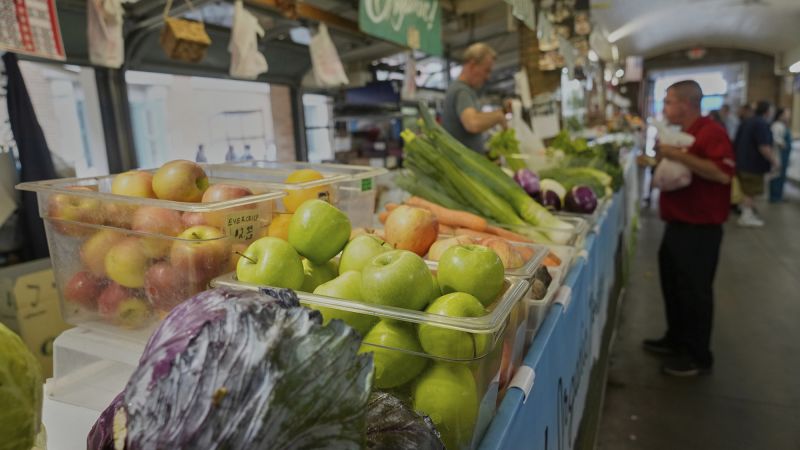In the unfolding narrative of the 2024 presidential race, one of the key promises made by former President Donald Trump was to significantly reduce grocery prices for American families. He boldly asserted that citizens would soon find relief in their grocery bills, however, this promise appears increasingly out of sync with the reality many are facing. Post-election, grocery prices have continued to trend upward, provoking concerns among consumers who are now altering their shopping habits amid a trepidation surrounding the economy.
Recent polling data from The Associated Press-NORC Center for Public Affairs Research provides a compelling insight into these sentiments. The survey indicates a pervasive anxiety among Americans relating to the costs of food. Notably, more than fifty percent of respondents expressed that grocery expenses are a major stressor in their lives, while approximately a third labeled these expenses as a minor source of tension. Only a mere fourteen percent reported that grocery costs were not a concern at all. This survey marks the first instance where such specific inquiries have been made, yet it reflects a consistent trend of frustration among the populace regarding food prices.
Despite an apparent decrease in inflation—from a peak of 9.4% in 2022 due to supply chain disruptions—grocery prices remain stubbornly high, illustrating a disconnect between economic metrics and consumer experiences. As of June, the Consumer Price Index indicated a modest rise of 2.4% over the preceding year, yet certain staples, like eggs and beef, have seen supplies tighten, leading to price increases. Furthermore, tariffs implemented during Trump’s administration seem to be squeezing prices on various imported items such as fruits, canned goods, and coffee, contributing to the overall consumer discontent.
Economic analysts, including David Ortega, a food economist from Michigan State University, have articulated the mounting disappointment among consumers regarding expectations rooted in Trump’s pledges concerning grocery pricing. He notes that consumers keenly monitor grocery bills, as these costs largely shape their broader economic perceptions. Such anxieties have been compounded by recent fluctuations in consumer confidence, which have wavered largely due to uncertainties surrounding the administration’s trade policies. Reports indicating a fragile economy further exacerbate these sentiments, suggesting that the trade war influences everyday life for many families.
In light of these challenges, household shopping behaviors are rapidly shifting. Consumers have become more intentional about their purchases, opting for smaller sizes, utilizing coupons, and frequently bypassing non-essential items in favor of necessities. Amid rising concerns regarding financial stability, many families are preparing more meals at home. Consequently, these adjustments signal a potentially troubling trajectory for the broader economy, as more cautious consumer behavior often heralds slower growth and uncertainty within the job market.
The repercussions of these shifts are evident in the views from the corporate sector. Kroger’s interim CEO, Ron Sargent, acknowledged that consumers continue to exercise caution in their spending habits amidst prevalent uncertainty, regardless of their income level. In response, Kroger has intensified its promotional offerings and expanded its store brands—often more affordable alternatives—to attract price-sensitive shoppers. Other companies, like Mondelez, reported noticeable declines in sales of snack items, indicating a shift in consumer priorities that reflect broader trepidations about inflation.
As the dialogue surrounding grocery costs and economic conditions evolves, consumers are expected to remain vigilant and adaptable. The interplay of inflation rates, trade policies, and individual spending habits will shape not only the immediate market landscape but also the political and economic discourse leading up to the 2024 elections. In summary, the plight of American consumers regarding grocery prices serves as a crucial indicator of their overall economic outlook, one that will undoubtedly influence voter sentiment as the election approaches.











